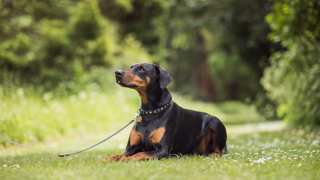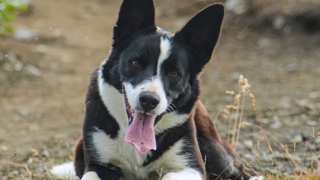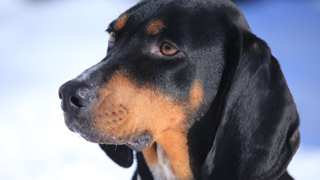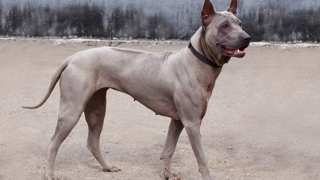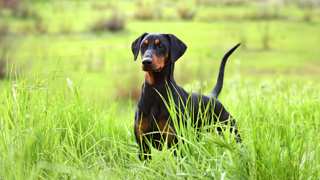Bull Terriers are remarkably hardy dogs, but as puppies they are like all dogs: still growing and easily susceptible to injury if prodded to be too active. There should be no exercise prior to 8 weeks. After that, very short walks punctuated by stops during which training and leisure take place are strongly recommended. As the weeks become months, gradually increasing the length of walks until he is at least 1 year old is essential to helping prevent bone fractures and unseen injuries that will crop up later in life. After sexual maturity has been reached, then the heavy exercise may begin. Once that mile marker has been passed, you will need to ratchet up the activity.
Bull Terriers should never be left unrestrained, whether by being inside, in a very secure yard, or on a leash. These dogs run hard, fast, and unexpectedly, and you won't be able to catch them once they burst from the figurative starting gate. If you opt for dog parks, don't do so until he has been properly socialized and trained. This breed is a bit territorial in the best of times, and you don't want them bringing their historical abilities to bear on other dogs.
This is a highly active breed that needs nearly constant movement to burn off all that energy. While they are no longer the fighting dogs of yore, they are still little packages of dynamite that, if left to build up, will explode in unbridled anxiety. This will lead quickly to all sorts of behavior problems that can result in injury to your Bull Terrier, other pets, property, and people. Here are some Bull Terrier exercises that will help keep him healthy and happy:
- Walks: This is a staple, but it is not the only exercise these dogs should partake. At least two walks a day of no less than 30 minutes is recommended.
- Running: If you are a jogger, this can be done in place of walking. It's best to not do this on uneven terrain or where there may be wild animal dangers.
- Swimming: Bull Terriers are not water dogs, but they will enjoy shallow water in which they can remain standing.
- Fetch: This is great fun for Bull Terriers, and they will probably tire you out before they stop!
- English Bull Terrier muscle building: This is not difficult, but it must be done gradually. Using bricks, a harness, and most anything that can slide on the ground with those bricks (or other ballast) on it is fine. Start with one-fourth of his weight and add a pound or two every week. Don't do this, however, until they are at least 1 year old.
Don't forget the mental activity too! If it's raining or you are short on time, hide snacks around the house. Put them in places where they can be smelled but not seen, and let him go. You can also build a simple, low PVC frame (about 4-6 inches high) with a blanket attached as the "bed" and a second blanket into which snacks are folded. This can provide mental and some physical activity as he searches out the snacks. There are also complex agility food puzzles that you can get. You should also use exercise time to continue training and socialization. Control the door when exiting and entering for walks, and be sure to always lead while walking him.

